Get paid for watching ads, Batooni gives a twist to hyperlocal advertising
Batooni, the first-of-its-kind hyper-local mobile advertising startup in India, has crossed an important milestone by acquiring over half a million users in a span of just 60 days. Batooni is a video advertising platform that was founded earlier this year. The platform is in the form of a dialer app, which plays an 8-10 second video ad when users dial a number through it. Once the user dials in, the app effectively transfers money to them as compensation for watching the advertisement.
Batooni is carving out a niche space for itself in India’s mobile advertising industry. The platform offers benefits to both the user and the advertiser. Advertisers save money as they pay only for the ads that are completely seen by their consumers. Batooni’s sophisticated campaign dashboard provides advertisers complete control over their mobile ad campaigns. A sophisticated campaign design and management system ensures the ad campaigns are targeted to specific audiences, delivering unprecedented ROI to advertisers.
On crossing this important milestone, Jitendra Chaturvedi, Director and Co-Founder, Batooni, said, “We are happy to have crossed this significant milestone which only reinforces the uniqueness of our offering both for advertisers and consumers. Today, we are scaling up our offerings and the company is expected to see further growth in the coming months. Ours is a unique platform that is specially designed for smartphones unlike the traditional approach where ads meant for desktop properties were then adapted to smartphones.”
Batooni runs on a state-of-the-art analytics system that lets advertisers configure their campaigns based on parameters such as demographic distribution, frequency of impressions, and even days of the week when the ads are displayed. The company has developed a path breaking hyperlocal video advertising platform for smartphones that compensate users for their time and attention with real monetary benefits, while offering advertisers targeted, tactically efficient video advertising on mobile phones.
For the Common Man
Beginning the presentation with a cartoon depiction of RK Laxman’ depiction of the Common Man, Chaturvedi says that “There is an underlying philosophy behind Batooni. Advertising has always subsidised media consumption. So, whether you are reading a newspaper or watching television everything is subsidised by advertisements. However, the value offered to the consumer at the most is entertainment. We believe there is a case for transferring some of the revenue going to media houses to the pocket of the consumer. Thus, Batooni helps make life better for the end consumer – the common man.”
“Batooni is derived from the Hindi term and means to be talkative.”
Chaturvedi went to on to say, “Mobile is the Holy Grail of advertising. Earlier, it was TV ads that were most effective. When you advertised on television things sold, but user consumption on mobile phones for the last several years has been increasing by a minute a day. At the same time, TV time spent is decreasing by 30 seconds a day. In fact, Indians are on mobile screens for almost 130-140 minutes a day. Very soon you will be seeing as much of mobile phones as much as television. Television is being seen for about 30 hours a week.”
“As per Nielson, the emotional response to advertisements on mobile phones is 53 per cent, while on television it is 43 per cent and emotional response to advertisements on digital platforms such as YouTube is only 36 per cent. That is why all advertisers especially the big ones are absolutely looking at mobile phones to reach the consumer.”
“However, right now all the advertising happening on mobile phones is only an adaptation of digital. If you have banner ads on desktops, then you have banner ads on mobile phones, which does not make any sense considering the size of the mobile screen.”
“Mobile is not digital and we need to think of it as an ad media from scratch. Batooni is a native mobile application built for a mobile first world.”
How does Batooni work?
“When you dial a phone number, consumers watch a small ad that is 8-10 seconds long and Batooni puts a certain percentage of the ad spend into the consumer’s wallet. Statistics show that on average, consumers make an average of 18-20 calls a day. Batooni could potentially transfer Rs 300 or more a month to consumers.”
“Batooni believes in paying consumers for their time, attention and their beak. It is time we compensated that last man” added Chaturvedi.
“Right now it is possible for us to show an ad to the consumer on a pincode basis. As we scale, we should be able to target a township or a colony.”
Hyperlocal advertising is most useful for SMEs, said Chaturvedi. “The Batooni advertising platform offers an inexpensive solution to local advertising needs of SMEs whose only other recourse is print or television is far more expensive. Advertising on media like radio would not be efficient as it goes everywhere whereas your catchment area maybe 2-5 km radius from the place of operations. Batooni gives you the opportunity to publish an ad at lesser than a pamphlets’ cost.”
What’s in it for advertisers?
“In advertising, there is a phrase called ‘spray and pray’, where advertisers spray their ad on a large number of people and pray that some may view it. Fact is, when a television ad is playing, 29 per cent of the time no one is in the room. 31 per cent of digital ads are completely missed. With Batooni, the audience availability is 100 per cent. It is unlikely that when somebody dials their phone they would have less than 100 per cent engagement. When consumers dial a number they are likely to wait for the call to connect.”
“When an ad plays on television, 51 per cent of people are found looking elsewhere mostly to their mobile phones.”
“There is a reason why TV ads work because they showcase the advertisement in all its glory on the full screen. On a mobile phone a pop up or a banner does not show the ad in its full glory. On digital, 50 per cent pixels shown over a second is considered a view. A 3-second video roll is considered a view. Using Batooni you can use the entire mobile screen to display ads to the consumer for its complete duration.”
“Batooni offers complete demographic targeting accounting for age, sex and location.”
“Most targeting in advertising leads to eco chambers. If a consumer wants a certain product, targeted advertising models make sure the consumer sees that product only. However, Batooni is a discovery platform where advertisers can show consumers new product categories that were previously unknown to them.”
The operations
Batooni has launched in UP. They have offices in Delhi. Ove the course of 2 years, they want to expand to all the major metro cities, beginning with Delhi-NCR followed by Kolkata, Mumbai, Chennai, Hyderabad, etc. They plan to begin operations in Mumbai in the next 3-4 months and already have a sales operation with an office in Malad.
They have half a million active monthly users in UP (Not downloads) over a period of 60 days.
Batooni is also targeting operations abroad, especially in Indonesia, where total ad spends per capita is 11x India ad spend per capita. They believe they can tap a significant share of the advertising market and grow the overall market itself through their unique platform.
In conversation with Adgully, Jitendra Chaturvedi, Director and Co-Founder, Batooni, sheds further light on the startup’s operations, growth strategy and more.
Data wise you seem to be clear on the things you are focusing on.
We will not get into narrowly focusing on consumers, because we believe as an advertiser that doesn’t help anyone really. As the focus becomes narrower, the cost to advertise becomes higher. If I am creating a video ad separately for each consumer, then the production costs go up. Ultimately, how much can I advertise to a consumer who is probably only buying a soap worth Rs 10? We do not want to hound our consumers.
How do you measure conversion on the Batooni platform? Traditionally on pop-ups and banners you could measure clicks and divert traffic to the advertiser’s platform.
When you dial a phone number, you are not likely to do some other activity. By the time your conversation is done, you are probably in a different frame of mind. I do not want to irritate my consumer. The average CTR (Click through rate) is 1.4 per cent, so what are we talking about really? Advertising is to make people aware of your services and leave it to them to buy it. If my communication has been good enough then they will buy it. Ultimately if the market pressure is high I will use CTR to justify to my advertiser, so after the call you may see a message that will have a link.
What kind of clients are you looking to partner with on your platform?
Right now it is the smaller businesses such as Zed Black Agarbatti and Pushp Masale that still have a national presence, even Vicco. Our partnership with HUL is just a matter of time because we need to go through Mindshare and for that we need a Nielson certification that happens this week. In a few weeks you will see a lot of HUL brands on Batooni.
When you know that you are reaching 100 per cent of your audience, what kind of dynamics does that create?
That means your ad budget goes farther now. You should be able to reach more people. At worst, you will save money. I see the advertising market expanding because of interventions such as Batooni. Advertising is growing at 11 per cent from Rs 70,000 crore last year. The space is completely untapped, because so far people are looking at mobile as an adaptation of digital. The philosophy and design of applications need to be done keeping in mind the mobile platform.





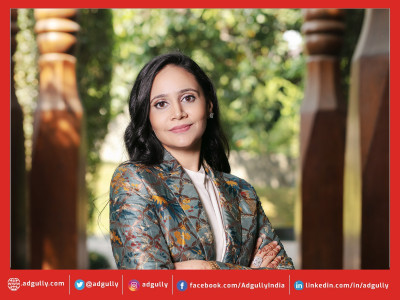

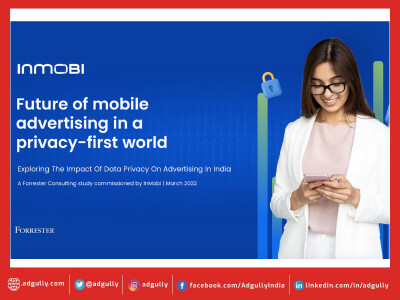


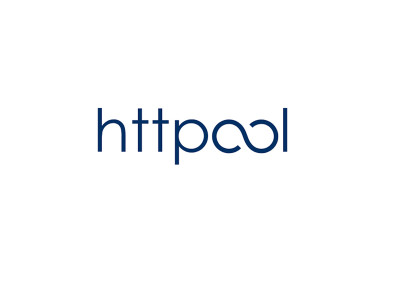

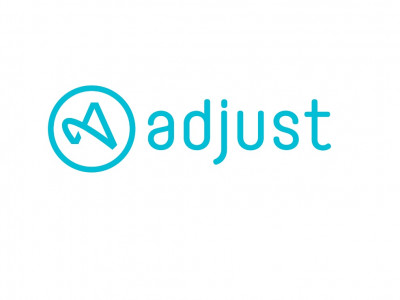
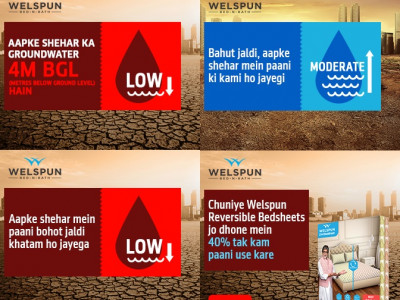
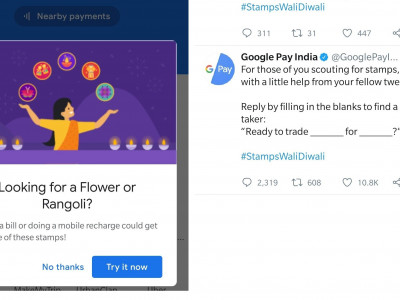
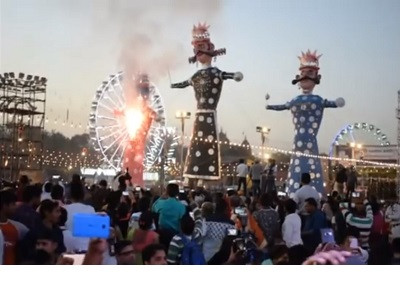


Share
Facebook
YouTube
Tweet
Twitter
LinkedIn